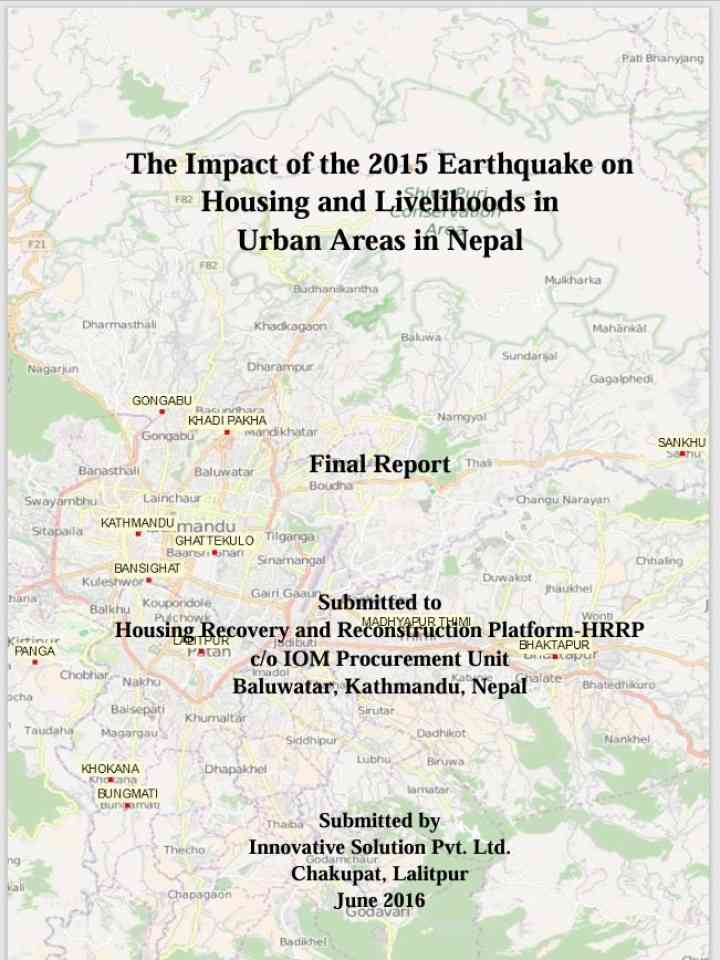The Impact of the 2015 Earthquake on Housing and Livelihoods in Urban Areas in Nepal (Final Report)
The Gorkha earthquake of 7.8 magnitude on 25 April 2015 and the strong aftershock on 12 May 2015 that struck the central and eastern regions of Nepal caused significant damage to private houses, public infrastructure, and heritage.
According to the Ministry of Home Affairs (MoHA), over 604,930 houses were destroyed, and 288,856 houses were damaged. According to PDNA, a total estimated damages (damages and losses) of NPR 706,461 million rupees (US$ 7064million) in four major sectors such as social, productive, infrastructure and cross cutting issues and resulted in 8790 human casualties and injured 22,300 people in the country. The distribution of disaster effects between private and public sector shows more than three-fold damages in the private sector compared to the public sector. For instance, there is an estimated damages of NPR540, 362 million (US$5,404million) in the private sector accounting for 76 percent as against NPR 166,100 million (US$1,661 million) accounting for 24 percent. The loss in personal income due to damages in the productive sectors like agriculture, irrigation, industry, commerce, tourism, finance etc. is NPR17,124 million ($171million).
The main objective of the study is to analyze the impact of the disaster in the urban sector and thereby help to the development of an urban housing recovery and reconstruction policy. The specific objectives are as follows:
- Document the earthquake impact on urban communities' housing conditions and livelihoods in a selected number of urban centres and their coping mechanism;
- Document the earthquake response in the selected urban centres with particular emphasis on those by municipal authorities, urban communities, CBOs and CSOs and support agencies;
- Analyse urban communities' needs and challenges to move forward with recovery and reconstruction with particular emphasis on the vulnerable people (e.g. urban poor, poor renters, informal settlers, tenants, female headed households and elderly people).
Explore further
